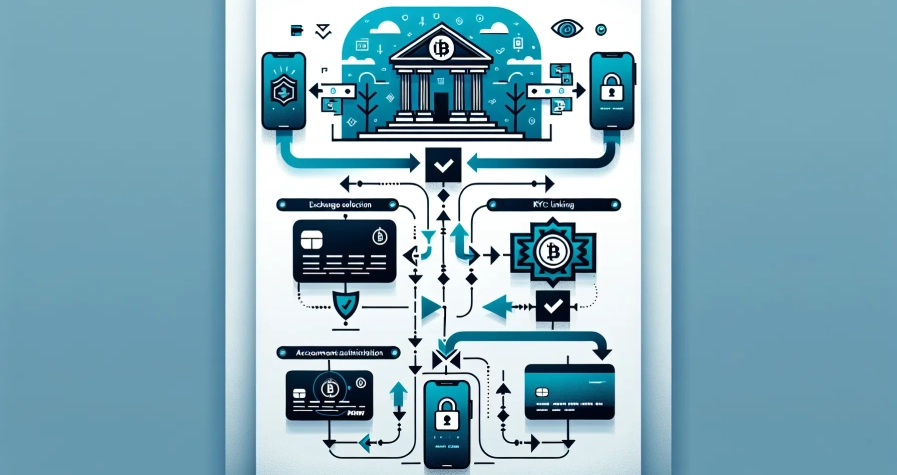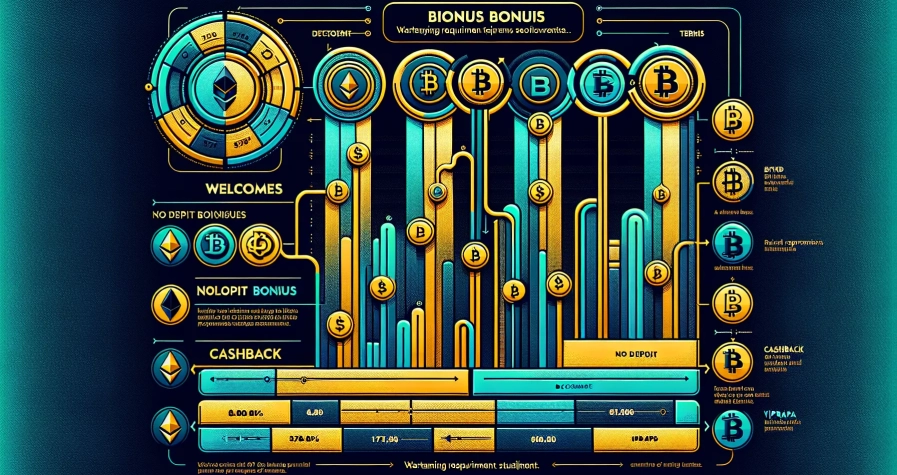Cryptocurrency ownership isn’t just about buying and trading, it’s about keeping those digital assets genuinely secure. Unlike traditional bank accounts with deposit insurance and fraud protection, crypto storage places the responsibility squarely on the holder’s shoulders. Choose the wrong method, and those funds could vanish in an instant through hacking, phishing, or simple human error.
The storage landscape offers three primary approaches: hardware wallets that keep keys offline, software wallets that balance convenience with reasonable security, and custodial solutions where third parties manage everything. Each comes with distinct trade-offs between security, accessibility, and control. Understanding these differences isn’t optional for anyone serious about protecting their holdings, it’s fundamental to successful crypto ownership.
Key Takeaways
- Hardware wallets offer the highest security for storing crypto by keeping private keys offline, making them ideal for long-term holdings.
- Software wallets provide a convenient balance between accessibility and security, suitable for regular transactions and interacting with decentralised applications.
- Custodial wallets managed by exchanges simplify crypto storage for beginners but require trusting third parties with complete control over your funds.
- The best approach to store crypto combines multiple methods strategically: hardware wallets for large holdings, software wallets for daily use, and custodial solutions for active trading.
- Private keys are the sole proof of cryptocurrency ownership, and losing them means permanent loss of access with no recovery option.
- Always secure your recovery seed phrase offline in multiple physical locations and never share it, as it represents complete access to your crypto assets.
Understanding Cryptocurrency Storage Fundamentals

At its core, cryptocurrency storage revolves around one critical concept: private keys. These cryptographic strings function as the mathematical proof of ownership for any crypto holdings. Without access to the private key, no one, including the legitimate owner, can move or spend the associated funds.
This differs fundamentally from traditional finance. A bank account exists on institutional servers with multiple recovery mechanisms. Cryptocurrency, by contrast, lives on distributed blockchain networks. The private key is the sole gateway to those funds, making its protection the central challenge of crypto storage.
What Are Private Keys and Why They Matter
A private key is essentially a randomly generated number, typically represented as a string of characters or a 12-24 word recovery phrase (called a seed phrase or mnemonic). This key mathematically corresponds to a public address, the equivalent of an account number that others use to send crypto.
The relationship is one-way: anyone can see the public address and its balance on the blockchain, but only the private key holder can authorise transactions from it. This creates both opportunity and risk. The opportunity lies in true ownership without intermediaries: the risk emerges when keys are lost, stolen, or compromised.
Storage methods differ primarily in where and how they keep these private keys. Hardware wallets store them on physical devices isolated from the internet. Software wallets keep them on internet-connected devices with varying levels of encryption. Custodial services hold the keys entirely, with users accessing funds through account credentials rather than direct key control.
Understanding this foundation clarifies why storage debates matter so much. It’s not about choosing a brand or interface, it’s about deciding who controls the keys and accepting the corresponding security model.
Hardware Wallets: Maximum Security for Long-Term Storage
Hardware wallets represent the gold standard for cryptocurrency security, particularly for substantial holdings or long-term investors. These physical devices, resembling USB drives or small electronic gadgets, store private keys in an offline environment that never directly touches the internet.
Popular options include Ledger Nano and Trezor devices, though numerous manufacturers compete in this space. Prices typically range from £50 to £200, a modest investment compared to the potential value they protect.
How Hardware Wallets Work
The security model relies on keeping private keys isolated within the device’s secure element or microcontroller. When a user needs to authorise a transaction, they connect the hardware wallet to a computer or smartphone, review the transaction details on the device’s screen, and physically confirm by pressing buttons on the wallet itself.
Critically, the private key never leaves the device. The connected computer or phone receives only the signed transaction, mathematical proof that the key holder approved it, without ever accessing the key itself. This isolation protects against malware, keyloggers, and remote attacks that plague internet-connected devices.
Setup involves generating a recovery seed phrase, typically 12 or 24 words. Users must write this down and store it securely, as it’s the only way to recover funds if the device is lost, damaged, or stolen. The hardware wallet itself can be replaced: the seed phrase cannot.
Advantages and Limitations of Hardware Storage
The primary advantage is straightforward: hardware wallets offer the strongest protection against digital threats. Even if a user’s computer is thoroughly compromised, attackers cannot extract keys from a properly configured hardware wallet. This makes them ideal for ‘cold storage’, holding crypto that isn’t needed for frequent transactions.
They also protect against phishing to some extent. Because transaction details appear on the device’s screen, users can verify the destination address independently of potentially compromised software.
But, hardware wallets aren’t perfect. The initial cost and setup complexity deter some users, particularly beginners with modest holdings. They’re also less convenient for frequent trading or payments, each transaction requires physical access to the device and manual confirmation.
Physical security becomes a consideration as well. The device itself must be stored safely, and the recovery seed phrase represents a single point of failure. If someone gains access to that written seed, they can steal all associated funds. Similarly, losing the seed while the device breaks means permanent loss of access.
Supply chain risks exist too. Purchasing hardware wallets from unofficial sellers or second-hand sources introduces the possibility of tampered devices. Reputable manufacturers include tamper-evident packaging, but users must buy directly from official sources to maximise security.
Software Wallets: Convenience Meets Accessibility
Software wallets bridge the gap between security and day-to-day usability. These applications, running on desktops, smartphones, or as browser extensions, store private keys on internet-connected devices, making them readily accessible but inherently more vulnerable than hardware alternatives.
Desktop and Mobile Wallet Options
Desktop wallets like Exodus, Electrum, and Sparrow offer robust feature sets with reasonably strong security for moderate holdings. They store keys locally on the computer, encrypted with a user-chosen password. This provides more control than custodial services whilst remaining convenient for regular transactions.
Mobile wallets such as Trust Wallet, Coinomi, and BlueWallet bring crypto management to smartphones. They’re particularly popular for users who interact with decentralised applications (dApps), make payments, or need portfolio access on the go. The convenience factor is substantial, approving transactions takes seconds without additional hardware.
Browser extension wallets like MetaMask have become essential tools for anyone using Ethereum-based applications. They integrate directly with websites, enabling seamless interaction with DeFi protocols, NFT marketplaces, and other blockchain services.
Most software wallets are non-custodial, meaning users control their private keys (typically through a recovery seed phrase). This distinguishes them from exchange accounts or custodial services. The user bears responsibility for security, but retains full ownership and control.
Security Considerations for Software Solutions
The fundamental vulnerability of software wallets stems from their connection to the internet. Any device that goes online can potentially be compromised through malware, phishing attacks, or operating system vulnerabilities. This makes them unsuitable as the sole storage method for large holdings.
Password strength becomes critical. Since keys are encrypted locally, a weak password creates an exploitable weakness. Users should employ strong, unique passwords and enable any additional security features the wallet offers, such as biometric authentication on mobile devices.
Device security matters just as much as wallet security. A software wallet on a malware-infected computer is compromised regardless of how good the wallet software itself might be. Keeping operating systems updated, using reputable antivirus software, and avoiding suspicious downloads form essential protective layers.
Phishing represents perhaps the most common threat. Attackers create fake wallet websites or apps that capture seed phrases during ‘restoration’ processes. Users must verify they’re downloading official applications from legitimate sources and never enter seed phrases into websites or suspicious apps.
Regular backups of the recovery seed phrase, stored securely offline, provide insurance against device failure or loss. But, this written backup becomes a physical security concern, just as with hardware wallets.
For many users, software wallets work best as ‘hot wallets’, holding amounts needed for regular transactions whilst keeping larger holdings in cold storage. This approach balances convenience with security, acknowledging that different use cases require different solutions.
Custodial Wallets: Letting Third Parties Manage Your Assets
Custodial wallets shift responsibility from the individual to a service provider. Cryptocurrency exchanges like Binance, Coinbase, and Kraken offer custodial storage by default, when users deposit funds, the exchange controls the private keys. Users access their balance through account credentials, much like traditional online banking.
When Custodial Storage Makes Sense
For beginners overwhelmed by seed phrases and security protocols, custodial solutions remove immediate complexity. There’s no risk of losing a recovery phrase or sending funds to an incorrect address through user error. The provider handles technical aspects whilst users interact through familiar login interfaces.
Active traders particularly benefit from custodial storage. Funds held on exchanges can be traded instantly without transaction fees or blockchain confirmation delays. For those making frequent trades, the convenience factor outweighs security concerns about key control.
Some custodial providers offer insurance against platform failures or hacks, providing a safety net absent from self-custody solutions. Reputable exchanges invest heavily in security infrastructure, cold storage, multi-signature authorisation, and cybersecurity teams, that individual users cannot replicate.
Account recovery mechanisms also appeal to those worried about lockouts. Forgotten passwords can potentially be reset through customer support, whereas a lost hardware wallet seed phrase means permanent loss. This safety net matters for users uncomfortable with the unforgiving nature of self-custody.
Risks of Surrendering Control
The fundamental trade-off is stark: custodial storage means trusting a third party with complete control over funds. The cryptocurrency saying ‘not your keys, not your coins’ captures this concern. Users don’t truly own their crypto, they hold a claim against the custodian.
Exchange failures, hacks, and insolvencies have repeatedly demonstrated this risk. Mt. Gox, once the world’s largest Bitcoin exchange, collapsed in 2014 with hundreds of thousands of Bitcoin lost. More recently, FTX’s spectacular 2022 failure left billions in customer funds unrecoverable. These weren’t theoretical risks, they were catastrophic losses for trusting users.
Regulatory and legal risks compound the problem. Custodial accounts can be frozen by authorities, seized in bankruptcy proceedings, or blocked if the provider suspects suspicious activity. This contradicts cryptocurrency’s core premise of permissionless, censorship-resistant value transfer.
Privacy concerns emerge as well. Custodial services know exactly how much users hold, their transaction history, and often extensive personal information gathered during account verification. This data can be shared with authorities, leaked in breaches, or used in ways users might not anticipate.
For these reasons, custodial storage suits specific use cases, active trading, small amounts for convenience, but shouldn’t be relied upon for significant holdings or long-term storage. The convenience comes at a cost that includes counterparty risk, loss of true ownership, and potential regulatory complications.
Comparing Storage Methods: Which Is Right for You?
Choosing the optimal storage method depends on individual circumstances, technical comfort, holding size, and usage patterns. There’s no universally ‘best’ solution, only the approach that best aligns with specific needs and risk tolerance.
Hardware wallets excel for:
- Large holdings worth protecting with maximum security
- Long-term investors who rarely need to access funds
- Those willing to invest time learning proper security practices
- Users comfortable with physical device and seed phrase management
Software wallets work well for:
- Moderate amounts needed for regular transactions
- Interaction with dApps, DeFi protocols, or blockchain applications
- Users seeking balance between security and convenience
- Those with good device security hygiene and technical understanding
Custodial solutions suit:
- Complete beginners still learning cryptocurrency basics
- Active traders needing instant access for frequent transactions
- Small amounts where convenience outweighs security concerns
- Users uncomfortable managing their own security infrastructure
Many experienced crypto holders employ a layered approach. Hardware wallets secure the bulk of holdings in cold storage. Software wallets hold working amounts for regular use. Custodial exchange accounts maintain small balances for trading opportunities. This diversification balances security, convenience, and functionality.
The amount held matters significantly. Protecting £50 worth of crypto doesn’t justify a £100 hardware wallet. Conversely, keeping £50,000 solely in a custodial exchange account invites unnecessary risk. Scale the security approach to the value at stake.
Technical comfort level cannot be ignored. A hardware wallet used incorrectly, with the seed phrase stored digitally, for instance, provides false security worse than a properly used software wallet. Understanding the security model matters more than simply choosing the ‘most secure’ option.
Usage patterns should drive decisions. Someone making daily crypto payments needs different infrastructure than someone accumulating Bitcoin over years. Forcing a hardware wallet workflow onto high-frequency use cases creates friction that may lead to security compromises through shortcuts.
The right answer for most serious crypto holders involves multiple methods used appropriately for their specific strengths. Security isn’t about choosing one approach, it’s about matching tools to purposes whilst understanding the trade-offs inherent in each.
Best Practices for Securing Your Cryptocurrency
Regardless of storage method chosen, certain security principles apply universally to cryptocurrency protection.
Secure seed phrase management tops the list. Recovery phrases should be written down, never stored digitally, and kept in secure, physically separate locations. Some users employ metal backup plates resistant to fire and water damage. Others split seed phrases across multiple locations using cryptographic schemes. The key principle: treat seed phrases as bearer instruments worth their entire associated holdings.
Verify everything before confirming transactions. Check recipient addresses character by character, as malware can swap addresses in copy-paste operations. Hardware wallet screens provide the most trustworthy verification point, as they cannot be altered by compromised computers.
Use strong, unique passwords for every wallet and service. Password managers help manage complexity without resorting to password reuse. Two-factor authentication should be enabled wherever possible, preferably using authenticator apps rather than SMS, which remains vulnerable to SIM-swapping attacks.
Test recovery procedures with small amounts before trusting a wallet with significant funds. Verifying that a seed phrase actually restores a wallet, before it’s needed in an emergency, prevents nasty surprises. This practice also confirms proper backup creation.
Keep software updated to patch security vulnerabilities. This applies to wallet applications, operating systems, and device firmware. Outdated software creates exploitable weaknesses that attackers actively target.
Beware of phishing in all its forms. Legitimate wallet providers never ask for seed phrases. Suspicious emails, fake websites, and social media scams proliferate in cryptocurrency spaces. Verify URLs carefully, bookmark official sites, and approach unsolicited messages with scepticism.
Limit exposure through sensible operational security. Don’t publicly discuss specific holding amounts or brag about crypto wealth. Such information makes individuals targets for physical theft, social engineering, or targeted attacks.
Maintain privacy where possible. Using different addresses for different transactions, avoiding unnecessary KYC when self-custodying, and understanding blockchain analytics all contribute to operational security that extends beyond immediate wallet protection.
Plan for inheritance and emergency access. Cryptocurrency’s security features become obstacles when holders become incapacitated or pass away. Proper estate planning, whether through trusted individuals with instructions, lawyer-held information, or specialised crypto inheritance services, ensures holdings aren’t lost forever.
Security represents an ongoing process rather than a one-time setup. Threats evolve, best practices improve, and personal circumstances change. Regular security reviews ensure protective measures remain appropriate and effective as the cryptocurrency landscape develops.
Conclusion
Cryptocurrency storage eventually reflects individual priorities around security, convenience, and control. Hardware wallets provide unmatched protection for significant holdings, software wallets enable practical daily use, and custodial services offer simplicity at the cost of true ownership. None inherently surpasses the others, each serves specific purposes within a comprehensive security strategy.
The most effective approach combines methods strategically. Cold storage secures long-term holdings. Hot wallets help regular transactions. Custodial accounts enable trading when needed. This layered structure acknowledges that different situations demand different tools.
What matters most isn’t which single option someone chooses, but whether they genuinely understand the security model they’re adopting. A hardware wallet misused offers less protection than a software wallet properly secured. Knowledge drives security more than any particular technology.
As cryptocurrency adoption expands and storage solutions evolve, the fundamental principle remains constant: whoever controls the private keys controls the funds. Whether holders manage those keys themselves or trust third parties, that decision shapes everything about their crypto security posture. Choose wisely, carry out properly, and review regularly, those three practices matter more than any specific product recommendation.
Frequently Asked Questions
What is the safest way to store cryptocurrency?
Hardware wallets offer the strongest protection, especially for large holdings. These physical devices keep private keys offline and isolated from internet threats, protecting against malware and remote attacks whilst maintaining full user control.
Can I lose my crypto if I forget my hardware wallet password?
No, as long as you have your recovery seed phrase. Hardware wallets use a 12-24 word seed phrase that can restore funds to a new device. However, losing both the device and seed phrase means permanent loss.
Are custodial wallets safer than managing my own crypto?
Not necessarily. Whilst custodial services handle technical security, you lose true ownership and face exchange failure risks. Major platform collapses like Mt. Gox and FTX demonstrate that surrendering key control creates significant counterparty risk.
How do software wallets differ from hardware wallets for crypto storage?
Software wallets store keys on internet-connected devices, offering convenience for daily transactions but with greater vulnerability. Hardware wallets keep keys offline on physical devices, providing maximum security for long-term holdings at the cost of accessibility.
What happens to my cryptocurrency if the exchange gets hacked?
With custodial exchanges controlling your keys, hacks can result in total loss of funds. Whilst some reputable platforms offer insurance, exchange collapses historically show customers often cannot recover their full holdings from custodial services.
Should I use multiple wallets for different amounts of crypto?
Yes, experienced holders often employ a layered approach: hardware wallets for bulk holdings, software wallets for regular transactions, and custodial accounts for trading. This strategy balances security, convenience, and functionality based on specific use cases.








